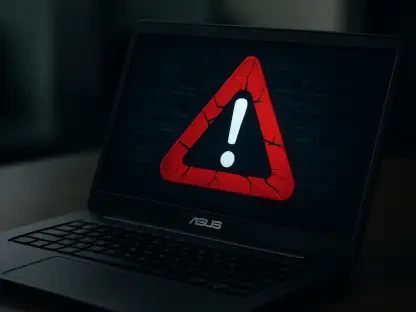Ensuring application security from design to operation is critical for any company that develops software, whether it’s intended for internal use or for external clients. The process of integrating security measures at every stage of software development and operations, known as DevSecOps, has transformed how organizations tackle information security. In today’s industry, DevSecOps principles focus on automating security processes and embedding security measures early in the development lifecycle. This has become crucial, especially as recent surveys indicate that over 99% of tech professionals report that production applications typically contain more than four vulnerabilities on average.A study by the Ponemon Institute and Rezilion highlights that 78% of surveyed participants take more than three weeks to address high-risk vulnerabilities within their systems. Furthermore, 30% of them noted that more than five weeks are necessary to effectively manage these vulnerabilities. Given that application vulnerabilities are a primary channel for attacks driven by economic and political motives, understanding where these vulnerabilities originate is essential. They often stem from unsafe development practices, such as using insecure programming structures and third-party components, including frequently used open-source frameworks and libraries. Developers may insert shortcuts to accelerate the process, and time constraints often lead to cursory code reviews that emphasize functionality over security. Additionally, outdated legacy software, known for its vulnerabilities and difficulty in updating, exacerbates the problem.
1. Education
For effective DevSecOps implementation, everyone involved in software creation, including all employees, contractors, and other relevant personnel, must undergo training in cybersecurity fundamentals and receive regular updates about secure development practices. This widespread training ensures that security is ingrained at every level of the organization and that everyone shares a baseline understanding of the security measures necessary to protect the software. It promotes a culture of continuous learning and security awareness that helps in adapting to new threats and vulnerabilities as they emerge.Regular training sessions should not only focus on theoretical aspects but also include practical exercises and real-world scenarios. This approach ensures that developers and other team members are well-prepared to handle actual security challenges. By instilling these practices early in the software development lifecycle, companies can significantly reduce potential threats. Training should also be an ongoing process with continual updates to cover new threats, new tool functionalities, and evolving best practices in cybersecurity.
2. Specifications
Every software development project must begin with clearly defining its security and privacy requirements. These requirements are shaped by various factors such as the type of data the product will handle, the known security threats it may face, established best practices, regulatory and industry standards, as well as lessons learned from previous incidents. Since software development is a continuous process, it is essential that these specifications evolve as the product develops to adapt to changes in functionality and the ever-changing threat landscape.Defining these requirements early on ensures that security measures are not an afterthought but a fundamental part of the development process. It allows the development team to understand the necessary security controls and design the software architecture in a way that meets these requirements. Moreover, these specifications guide the entire development process, from initial coding to final deployment, ensuring a consistent and comprehensive approach to security. Keeping these specifications updated throughout the product’s lifecycle is crucial as it helps in adapting to new threats and vulnerabilities, ensuring continuous protection.
3. Architecture
At the architecture stage, threat models are created to recognize and categorize threats based on existing and potential risks. This process begins by outlining the different components of a product and how they interact in various functional scenarios, such as authentication. Data flow diagrams visually represent the interactions of data flows, data types, protocols, and other relevant components. Keeping these threat models updated throughout the product’s lifecycle is crucial, as they must adapt as the software evolves to ensure ongoing security.Threat models play a vital role in identifying potential security risks and guiding the implementation of appropriate security measures. By examining how different components interact and identifying possible attack vectors, development teams can proactively address vulnerabilities before they become major issues. This proactive approach to threat modeling not only enhances the security of the software but also helps in creating a more robust and resilient product. Regularly updating these models ensures that new threats are identified and mitigated promptly, maintaining the overall security posture of the software.
4. Coding
The coding phase begins with developers following the plan that was established in the earlier phases of development. Providing developers with secure development tools is crucial in this stage to ensure that they can incorporate all privacy, security, and functionality requirements into their software. These tools may include secure development environments, compilers, and integrated security checks that help developers write code that meets security standards from the outset.Using secure development tools, developers can identify and address potential security issues early in the coding process, significantly reducing the likelihood of vulnerabilities making it into the final product. These tools often include features such as static code analysis, which allows developers to detect vulnerabilities in real-time as they write code. By integrating these tools into the development environment, developers can continuously monitor and improve the security of their code, ensuring that security is a fundamental part of the coding process.
5. Validation
Before any code is released, it undergoes thorough inspections and approvals to ensure that it meets the required security standards. This process includes manual reviews conducted by individuals who are separate from the code developers, ensuring a vital separation of duties to prevent any single person from both writing and releasing the code. Additionally, this step involves a series of automated checks within the commit pipeline, covering aspects such as static and dynamic code analysis, binary analysis, credential and secret scanning, encryption scanning, fuzz testing, configuration validation, and open-source software compliance.These validation processes are essential for identifying and addressing any potential security issues before the code is deployed. Manual code reviews provide an additional layer of scrutiny, allowing experienced security professionals to identify vulnerabilities that automated tools may miss. The combination of manual and automated checks ensures a comprehensive approach to validation, significantly reducing the likelihood of security vulnerabilities in the final product. By thoroughly validating the code before release, organizations can ensure that their software is secure and reliable, reducing the risk of security breaches.
6. Deployment
Before deploying software into products, a thorough review is conducted to verify that the security features implemented during development align with the initial specifications set during the architecture phase. Additionally, a contingency plan is developed to address potential security system breaches, ensuring that the organization is prepared for any eventualities. Rather than deploying builds to all users simultaneously, they are incrementally rolled out to progressively larger groups, allowing for careful monitoring and quick mitigation of any issues that may arise.This incremental deployment approach allows organizations to identify and address any security issues in a controlled manner, reducing the risk of widespread impact. It also provides an opportunity to gather feedback from early users and make necessary adjustments before a full-scale rollout. By ensuring that security is a fundamental part of the deployment process, organizations can maintain the integrity and reliability of their software, providing a secure and seamless experience for users.
7. Monitoring
Securing applications from design through operation is critical for any software-developing company, whether the software is for internal use or external clients. The DevSecOps approach, which incorporates security throughout the software development and operations lifecycle, has fundamentally changed how organizations manage information security. Modern DevSecOps emphasizes automating security processes and embedding security measures early in development. This is increasingly important, given that recent surveys show more than 99% of tech professionals report that production applications usually contain upwards of four vulnerabilities on average.A study by the Ponemon Institute and Rezilion found that 78% of their survey respondents take more than three weeks to patch high-risk vulnerabilities in their systems. Moreover, 30% of participants require over five weeks to manage these vulnerabilities effectively. Identifying the origins of these vulnerabilities is crucial because they are often key avenues for attacks driven by economic and political motives. Common sources include insecure development practices like using risky programming structures and third-party components, such as open-source frameworks and libraries. To speed up development, developers may take shortcuts, and tight deadlines can lead to superficial code reviews that prioritize functionality over security. Additionally, outdated legacy software, notorious for its weaknesses and difficulty to update, worsens the issue.Understanding where vulnerabilities originate helps in fortifying application security. By embedding security measures early in the development lifecycle and automating security processes, companies can better protect their systems from potential attacks.









